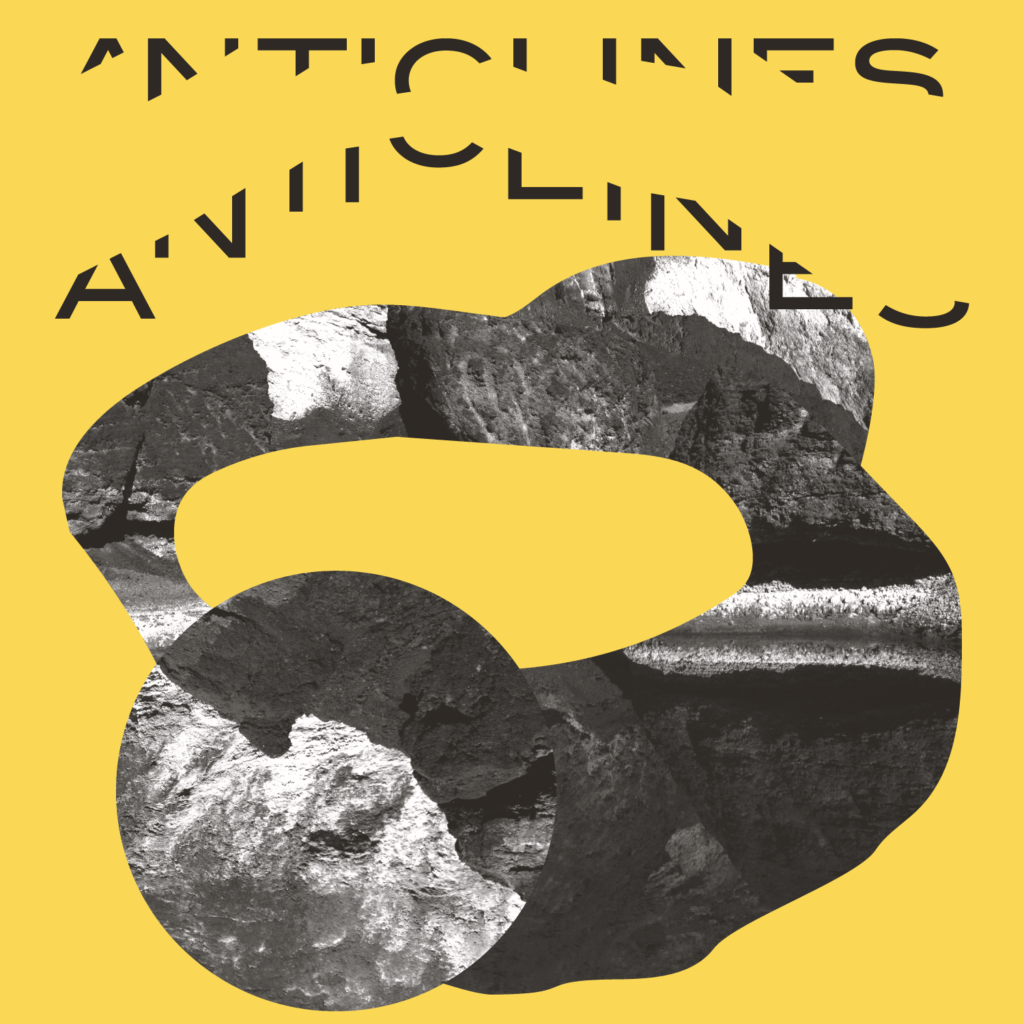Much of what concerns Lucrecia Dalt is beyond comprehension. The Berlin-based, Colombian-born producer thinks deep and vast about her subject matter, a mass of knowledge and theoretical reasoning that comes together in highly conceptual, uncannily alluring music. For her sixth album, Anticlines, released via New York’s RVNG Intl. on May 4, Dalt reaches back into her distant past as a geotechnical engineer and applies it to a sound that haunts her present. The perpetual volatility of the earth, the very thing we walk on, is pulled into focus by a sonic boring down and into its strata of continuous deposition.
“We breathe tar,/ as only lovers,/ breathe tar,” chants Dalt, to the brittle rhythm of ‘Tar,” before its lyrics mirror then segue across the unstable bounds of one discrete track into the next in ‘Atmospheres Touch,’ premiering today on AQNB. The nebulous three-and-a-half minute piece waltzes so freely over a partly-ambient, mostly melodic dirge of warped and wavy choral patches — nearly human vocal simulations — that time seems to contract. Its placing in an album that challenges ideas of edges, ends and linearity, comes in a combined motion that expands and contracts like a living organism. The anxious, layered signals of ‘Analogue Mountains’ draws on the allegorical book, Mount Analogue by para-surrealist René Daumal, of a man’s search for an unknowable truth on an impossible landform.

Dense and at times impenetrable, Anticlines, takes its name from the convex formation where the layers of sedimentary rock of ages curve upwards, bringing the oldest strata to the surface. Conceptually, it draws on the “unhuman phenomenology” of Dylan Trigg’s The Thing, the applied archaeological theory of Uzma Z. Rizvi’s ‘Theorizing Decomposition‘*, an Amazonian myth and a martian meteorite, disrupting any preconceived distinction between animate and inanimate bodies.
**I’m curious what your relationship is to the work in this kind of industry, specifically with geotechnical engineering. It’s like a sort of inherently manmade type of work. For a deep ecologist, it could be read as human ‘interference’ but I suspect your relationship with the earth and geotechnical engineering is less reductive…
Lucrecia Dalt: Underground things are quite more unpredictable than what you get to see above the surface. And it’s precisely the unpredictability of the soil, undercurrents, and geology that struck me at first and that still attracts me to this day. There’s a lot of technology development in materials, for example concrete, steel, wood, and glass. We well know how they behave under different conditions, they are easy to test in a laboratory. But with a piece of land is different — you cannot test the whole, and one probe is sometimes not representative. Yet, you have to predict the behaviour of this piece of land ‘eternally.’
**There appears to have been quite a progression over the last six albums to where you are right now with Anticlines but you’re a civil engineer, what made this part of your life so central to this album in particular?
LD: I don’t consider myself a civil engineer anymore. I mean, I don’t think I could be thrown into a project and start working wilfully within that process. But I work with the memories of it. How they have distorted my memories, but especially how they keep transversally informing what I do. Geology, for instance, I think it’s just so fascinating because it has the power to break the supremacy of hierarchical bodies, to haunt the idea of lineal time, which is something I’ve been interested in exploring throughout my last albums.
**I’ve seen a lot of press discussing the absence of the self, or the body within your music, while still managing to make it something interesting and truly intimate. Can you say something about what drives you to do it this way? Do you think this kind of mise en scène of an externalised inner world is a convention that for some reason is assumed to not apply to you specifically?

LD: Well, I guess there could be a misinterpretation of my interests, or just taking one constant (perhaps a variable) out of the whole equation. I like to work with the problem of being encased in a body; how can I let the outside, the alien collide with my consciousness at work and operate in that friction? Inside, outside, inside, outside, to the point it’s just outside. Or at least that’s what I hope for. But this is what informs mostly the ‘conceptual’ side of my creative process that transfers or becomes more evident in the lyrics, press releases, etcetera. In any case, if I would have taken my concerns around this record too far, I would have probably ended in an AI generative music operation but I’m not interested in that at all. I love composing, arranging, and being responsible for the result.
**On the point of this psychogeography, Anticlines feels like a perfect merging of all these elements — a discarding of this human / nature divide, as well as a nod to a new consciousness (perhaps specifically referring to ‘Edge’ and the El Boraro myth) — is that a statement you can relate to?
LD: Yes, I relate to that. “If you grow into your own sense of self and body knowing that both space and time are normatively known to be under your control, then certainly all space, all time and thus all history, archaeology, and heritage is your body’s or no body’s.”* Could we possibly have access to a new form of consciousness? How can we trespass certain edges and boundaries, a skin for example, to be able to experience new forms of subjectivity, of intra-action? Or could we even talk about body ownership. That’s what I was trying to address in ‘Edge’ by using that myth.

**Does your work have any relationship to speculative realism? The kind of anthropomorphised land formation reminds me a little of an Erik Davis piece on Manuel de Landa, where he applies stratification to body parts…
LD: I’ve been collaborating with the Spanish artist Regina de Miguel, who’s interests in extremophiles had taken her to Antarctica. Also, while making Anticlines I was reading The Thing by Dylan Trigg. He touches on extremophiles, as well, and I connected with the speculative idea of the consequences of finding fossilized martian bacteria in ALH84001 because it presents us with a prospect that is anterior to our collective subjectivity as humans. While working as an engineer, I had to go on identifying anthropic deposits. All these ideas, mixed along with the analogue mountain proposed by René Daumal is how I came up with that particular speculative scenario in which “we might well be living in mountains transferred from Mars.”**
Lucrecia Dalt’s Anticlines is out via New York’s RVNG Intl. on May 4, 2018.














